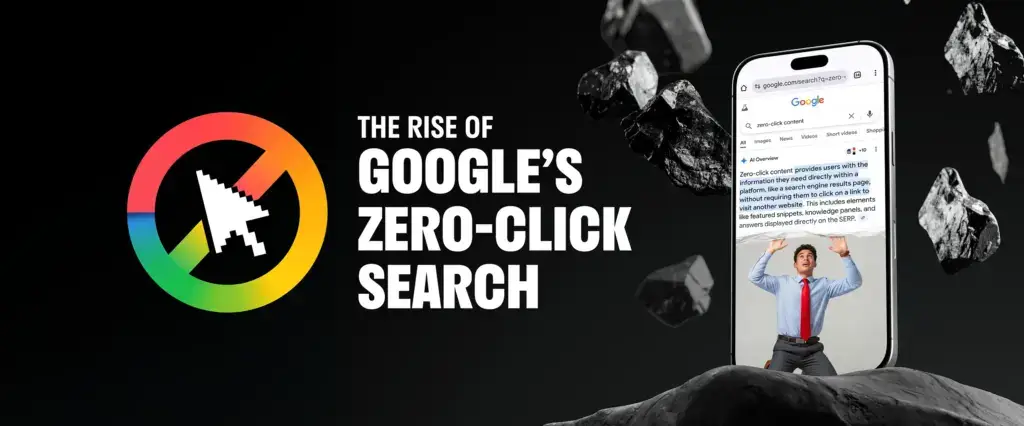Introduction: The End of the Search Highway?
There was a time when ranking on Google’s first page was the goal for any publisher, brand, or marketer aiming for visibility. But things are changing—fast. The rise of “Google Zero” means the rules of digital traffic are being rewritten. Powered by AI Overviews, Google increasingly keeps users within its own ecosystem, giving direct answers and reducing the need for users to click through to external sites.
What is “Google Zero”?
Coined in 2024, the term “Google Zero” describes a world in which Google is no longer just a gateway to the web but an “answer engine.” When users search, they often receive AI-generated summaries—known as AI Overviews—above traditional search results. These summaries offer immediate answers, often satisfying users without them needing to click any further.
“The era of Google Zero isn’t a maybe, it’s a momentum shift. If Google can answer your question, complete your task, and close your tab all in one shot, the open web gets squeezed.”
—Nina Goli, Head of Digital Strategy at Modern Citizens
Example:
A user searching “best places to visit in Paris” may now see an AI-generated summary listing top attractions, travel tips, and recommendations—all before seeing links to travel blogs or tourism boards. Many users will find all they need in this overview, never venturing further.
Why Is “Google Zero” Different From Past Google Changes?
While publishers and marketers have navigated numerous Google algorithm updates over the years, “Google Zero” is different. It marks a structural reset: organic search as a traffic engine is declining, and the once-reliable flow of referrals from Google is drying up. Being featured in a search result is no longer a guarantee of meaningful web traffic.
The Evidence: Traffic Declines and Ad Shifts
According to SimilarWeb, the percentage of “zero-click” news-related queries has jumped from 56% to nearly 70% in just a year since AI Overviews arrived. For publishers, the fallout is very real:
- Business Insider saw a 55% drop in organic search traffic and responded with staff layoffs.
- eMarketer estimates that by 2029, U.S. advertisers will have shifted over $25 billion (14% of search budgets) into AI-powered search due to these changes.
Example:
A news site that once relied heavily on Google for traffic may now find its reader numbers halved, threatening ad revenue and forcing layoffs or restructures.
| Before AI Overviews (2023) | After AI Overviews (2024) |
|---|---|
| News-related zero-clicks: 56% | News-related zero-clicks: ~70% |
| Publishers: steady organic traffic | Publishers: major declines in traffic |
Who Is Most at Risk—and Who Isn’t?
- Most Vulnerable:
Generalist publishers and websites built for broad, search-optimized content. Their information is easy for AI Overviews to summarize and serve directly. - Possible Survivors:
Niche and authority-driven publishers. Depth of expertise and unique content can still win them featured attention in some Overviews. - Brands’ Perspective:
Companies with rich first-party data and direct-to-consumer (D2C) models have buffers. Those with strong relationships with their audience are less at the mercy of search engines.
Example:
A general interest magazine focusing on “top 10” lists is more likely to be squeezed out by AI Overviews, while a specialist publication on rare medical conditions may still drive traffic due to unique insights.
Legal and Regulatory Concerns
This shift hasn’t gone unnoticed by regulators. In the European Union, an antitrust complaint alleges that AI Overviews intensify Google’s dominance at the expense of independent publishers.
Can Publishers and Marketers Adapt?
Adaptation is possible but comes with cost, fragmentation, and uncertainty. Some strategies include:
- Focusing on branded content, newsletters, and direct audience relationships.
- Prioritizing authority and niche expertise in content creation.
- Shifting marketing budgets to paid placements, influencer campaigns, or platforms like YouTube and TikTok, where discovery isn’t as stifled.
No single tactic can fully replace the volume and value of search-driven traffic, but diversifying digital strategies is now a must.
Example:
A digital publisher might invest more in email newsletters to build direct relationships with readers or create exclusive content on subscription platforms.
The New Normal
Unless there’s a major shake-up—through changes in user behavior, regulatory action, or unlikely competition—“Google Zero” appears to be the new normal. Publishers and marketers are forced to play defense in a game that’s already changed.
“As ‘answer engines’ replace ‘search engines,’ brands will have to think more broadly about how they show up online and what objectives they set and measure.”
—Chris Pearce, MD of Greenpark
Conclusion
The age of “Google Zero” is here. For those whose livelihoods depend on search visibility, the priority now is to own their audience, focus on expertise, and prepare for a digital landscape where Google answers more and refers less.

